Abstract
This study aimed to analyse the contribution of infaq funds to the social and economic resilience of the community during the COVID-19 pandemic in West Papua, Indonesia. This study uses a mixed-method approach, combining qualitative and quantitative studies. Qualitative data were collected through focus group discussions with administrators, Dai [Islamic preacher] and mosque congregations to obtain information about the form and mechanism for disbursing infaq funds. Furthermore, the state of distribution of infaq funds is confirmed to the recipient community with an online survey as quantitative data. The data obtained were tabulated and analysed with descriptive and inferential statistics using multiple linear regression assisted by SPSS software 25 version. The research findings show that: firstly, the form of the social-economic contribution of infaq funds is carried out by: (1) financial assistance, (2) social assistance, and (3) health assistance. Secondly, infaq, an instrument of Islamic economics, can contribute to tackling the social and economic impacts of the community amid the COVID-19 outbreak. Thirdly, of the three forms of assistance provided, the health assistance aspect contributed 38.320%, the financial assistance aspect amounted to 37.173% and 24.339% to social assistance. This study shows that the community most needed health and financial assistance from infaq funds during the COVID-19 pandemic.
Contribution: This study complements the existing literature and provides a new scientific treasure. That the infaq fund, as a philanthropy, turned out to be able to contribute to realising the social-economic resilience of the community during a disease outbreak. The form of health, financial and social assistance from infaq funds is a priority in accelerating the community’s economic recovery. It can be a countermeasure to socio-economic impacts during disasters and disease outbreaks.
Keywords: infaq funds contribution; socio-economic resilience; Islamic economics; COVID-19 pandemic outbreak; Islam in West Papua Indonesia
Introduction
The economic impact of the COVID-19 pandemic on the Indonesian people has reached an alarming peak. The Ministry of Finance has implemented a budget (refocusing policy) four times in the 2021 fiscal year and three times in 2020. This has implications for the addition of foreign debt to experience a drastic increase (Puspasari 2020). In addition to economic policies, the government’s policy of imposing restrictions on community activities has substantially reduced community activities. This policy hurts the economic movement of the community (Sani 2020). In addition, world leaders have also adopted physical distancing policies to control the COVID-19 outbreak. However, this policy impacts the decline in overall economic activity (Iskandar, Possumah & Aqbar 2020). World Bank data show that around 24 million people in East Asia and the Pacific, including West Papua in Indonesia, are experiencing a significant decline (World Bank 2020). In addition, the Central Statistics Agency released national economic growth in the second quarter of 2021, where only West Papua Province experienced economic growth of -2.39% during the COVID-19 pandemic (Jayani 2021). With most of the community being at the lower middle economic level, COVID-19 severely threatens the people of West Papua. The study of Paolo Surico and Andrea Galeotti shows that the lower middle class is the most vulnerable in maintaining economic resilience because of COVID-19 (Surico & Galeotti 2020). This will continue to happen if all components and elements of society and the government do not find the right formula in tackling COVID-19; the community’s economy will experience profound dynamics.
With the above conditions, the question arises: How can West Papua, with the lowest economic growth in Indonesia, get through it? What do you have to be able to survive amid a pandemic that is not certain when it will end? The honest answer lies within the Indonesian people. As a country with the largest Muslim population in the world, Muslims can make the best contribution through Islamic Economics and Sharia Finance instruments (Hafizah 2021; Iskandar et al. 2020). Through the Qur’an, Allah SWT instructs Muslims, in particular, to always care for others. One of the manifestations of this concern is distributing infaq managed by the mosque to the needy, poor, broke and impoverished (Aziz 2021; Enghariano 2020). Infaq is considered strategic and urgent in helping to alleviate poverty in areas with a Muslim community base (Ascarya 2021; Malik & Hussain 1994; Rijal, Zainuri & Azwari 2020). It is urgent because it is related to economic and social needs due to various government policies tackling poverty during the COVID-19 pandemic. It was strategic because this contribution would increase public trust in mosques. This will create an orientation for congregational development that is socio-religious and social-economic based, according to the vision of the Indonesian mosque council (Yasmin 2020).
In addition, studies on the economic resilience of the Islamic economy-based community during the COVID-19 pandemic have not been widely carried out. Existing studies are still focused on studies of increasing infaq finance (Adnan 2013; Muttaqien & Mas’ud 2021) either through conventional methods (Aji et al. 2021; Uyun 2015) or digitally (Hudaefi & Beik 2021), theoretical studies of infaq fund models and management (Hermawan, Restu & Rini 2016; Puspitasari Gobel 2020; Zibbri et al. 2021), infaq fundraising (Aji et al. 2021), and community empowerment through infaq (Saripudin, Djamil & Rodoni 2020). It can be seen that the practical study of the contribution of infaq in overcoming the social-economic impact has not been of great interest to academics, so it is necessary to conduct comprehensive research immediately. The goal is that infaq fund managers can directly distribute to those entitled appropriately to accelerate economic response during the COVID-19 pandemic.
This study explores mosques’ contribution in overcoming the community’s socio-economic impacts during the COVID-19 pandemic. Contributions that are right on target and directly impact the benefits to the community are the focus of this research study. If not, the infaq funds will be in vain and be a disaster for the distributors (Aziz 2021). In addition, this study will also look at how mosques contribute not only as religious pillars but also as instruments for social and economic resilience following current needs. In the end, mosques can take part in response to COVID-19 through infaq mechanisms.
Infaq as an instrument of Islamic philanthropy
Islam guides its people to be clean, generous and forgiving souls by teaching their willingness to provide assistance, alms and infaq to others (Aprianto 2017). Wahbah Azzuhaeliy called infaq an instrument of developing goodness, namely the benefit of the life of the world and the hereafter, so that Muslims are prohibited from being stingy (Azzuhaeliy n.d.). In QS. Ali Imran [3]: 134, it is also stated that infaq is issued to every believer, whether high or low income, to help others. This means that donating is God’s command for humanity, following Islamic teachings (Enghariano 2020; Fadhilatunisa et al. 2020) and reducing poverty (Aziz 2021). Therefore, infaq may be given to anyone in need (Fauzia & Riyadi 2015). In addition, infaq functioned as an instrument in helping the community’s needs in their daily lives, both in the form of financial, social and health assistance (Aziz 2021). This emphasis on the attitude of giving is a suitable means to help create a society that cares about social conditions (Aprianto 2017) and can save the afterlife (Muttaqien & Mas’ud 2021). Therefore, this infaq must be immediately distributed to people in need (Aziz 2021), including those affected by the pandemic.
Some views on infaq are briefly as follows: firstly, Arini Saadah stated that infaq is a commendable practice that can be done in Islam. Apart from cleaning property, it also helps other people solve the community’s economic and social difficulties. According to him, there is a misunderstanding among people about the concept of infaq, that Islam never imposes a certain amount to be donated (Saadah 2020). It was further stated that infaq is different from illegal levies. Infaq is based on the giver’s sincerity of moderate infaq (Rosmini 2016; Saadah 2020). Secondly, the National Amil Zakat Agency emphasises that there is a difference between infaq and alms. According to him, infaq is flexible, namely spending or donating something of a property intended for mosques, foundations or needy people. At the same time, alms are all kinds of kindness given voluntarily in the form of money or ideas to help others, including a smile (Kelana 2020). Thirdly, M. Siddiq Al Jawi said that infaq is the use of the property to meet needs. According to him, zakat can be categorised as infaq because it is intended to meet needs. M. Siddi emphasised that infaq is a property oriented to consumptive activities (Jawi 2020). Thus, infaq is generally designed for the community’s socio-economic recovery, which must be immediately distributed to the poor, needy and other people in need (Enghariano 2020). This is very relevant that infaq can be used to ensure the socio-economic needs of people in need, especially during the COVID-19 pandemic.
Existing studies have shown that Islamic philanthropic instruments, including zakat, infaq and alms funds, play an essential role in the socio-economic life of the community (Puspitasari Gobel 2020; Uyun 2015). Funds collected are generally used to benefit the community (Agama 2015; Yudho Anggoro 2018). However, during the COVID-19 pandemic, the management of infaq funds experienced difficulties. At least three discussion groups were found from previous studies related to infaq, namely studies related to the collection and optimisation of infaq funds, management of infaq funds and distribution of infaq funds to the community during the COVID-19 pandemic.
Firstly, a study on increasing infaq funds during the COVID-19 pandemic. The existence of a pandemic has a significant impact on the income of infaq funds. Infaq fund managers, including mosques and amil institutions, must be more active and innovative in fundraising. For example, through campaigns in online media (Hudaefi & Beik 2021) and counselling (Uyun 2015). During the COVID-19 pandemic, people tended to use technology platforms more in distributing infaq funds (Aji et al. 2021). In addition, the ‘Friday Thousand’ programme carried out by the community every Friday also significantly contributes to collecting infaq funds (Khaerunisa, Yayuli & Febriandika 2021). With this infaq instrument, the government can be assisted in accelerating the community’s economic recovery from the crisis (Ascarya 2021).
Secondly, a study related to the management of infaq funds. The management of infaq funds distributed to the public during the pandemic is quite diverse, both in the distribution method and the form of assistance. Generally, assistance is provided in the form of medical assistance, financial and social assistance (Ascarya 2021) and educational scholarship assistance for the affected communities (Alin Nordin & Rahman 2018; Mursal et al. 2021). In addition, assistance with primary materials, helping orphanages and distributing masks are priorities in allocating infaq funds (Mursal et al. 2021).
Thirdly, the distribution system of infaq funds is quite diverse. Starting from direct giving by the infaq fund manager (Uyun 2015) and also using the principle of ‘from the citizens, by the citizens, and for the citizens’ as the embodiment of the typical Indonesian ‘gotong-royong’ icon (Adinugraha 2017). In addition, Hidayati, in her study, mentions that there are two approaches in the distribution of infaq funds, namely partial and structural approaches (Hidayati et al. 2020). The partisan course is aimed at the poor and weak, carried out incidentally. The purpose of this method is so that economic problems can be resolved for a while. Meanwhile, the structural approach emphasises continuous assistance to achieve social and economic independence (Hidayati et al. 2020).
Infaq for the social and economic resilience of the community
Various studies have also shown that the COVID-19 outbreak is a serious threat and has implications for the social and economic resilience of the community and must immediately find instruments as a protection measure (Brada, Gajewski & Kutan 2021; Hadi 2020). Individuals or groups that have good social resilience mean being able to survive, overcome and manage challenges (the impact of the COVID-19 outbreak) that occur in the surrounding environment and find solutions to these challenges and vice versa (Bastaminia, Rezaei & Saraei 2017; Siahaan 2012). Likewise, with the economic resilience of the community, their resilience and tenacity in the face of disasters also impact the family’s economic stability (Sadewo 2020; Wulandari 2017). Therefore, as Islamic philanthropy, infaq funds can be used to help relieve society when disasters affect (Makarim & Athief 2022).
Existing studies show that infaq has not been used as an essential instrument in solving the socio-economic problems of the community during the COVID-19 pandemic. Existing studies still highlight how business actors can maintain their business and still get financial benefits (Bui, Tzu-Ling Chen & Wickens 2021), including the resilience of the tourism sector (Mirehie & Cho 2021; Rahman et al. 2021; Rai, Rai & Singh 2021). This sector in the social hierarchy is at the top level with capital. Meanwhile, the economic resilience of the family, which incidentally is at the lower level (consumptive), is not widely practised and is very vulnerable. As Rahman and Lian pointed out, poor households are less resilient and more likely to fall into poverty because of COVID-19 (Ur Rahman et al. 2021).
Some of the existing literature has shown that infaq funds can function as an instrument in overcoming the COVID-19 pandemic. In addition, it is a must for a Muslim to distribute infaq funds to benefit the people in need (Aziz 2021; Fauzia & Riyadi 2015). However, existing studies focus on increasing infaq funds and have not been widely used as an economic and social instrument for the affected communities. However, current studies tend to focus on improving infaq funds and the economic resilience of business actors and have not been widely used as an instrument for the social and economic stability of the affected communities.
Methodology of research
This study on the distribution of infaq funds was conducted in the Province of West Papua, Indonesia. The choice of location is based on socio-economic issues, which are of great concern to the current government. In addition, the West Papua region, one of Indonesia’s poorest provinces (Adhi 2021) with the highest index of religious tolerance in Indonesia (Savitri 2020), makes this study’s object relevant. In the end, the local government can implement the study results directly in determining policies to overcome the social-economic impact of the COVID-19 pandemic on the community.
Furthermore, this study uses a mixed-method approach to the sequential exploratory model. This model combines qualitative and quantitative methods sequentially. In the first stage, they use qualitative, and quantitative methods in the second stage. Qualitative methods are used to find hypotheses on finite samples, and quantitative methods to test hypotheses in a broader population (Creswell & Clark 2017). Combining these two approaches is intended to provide a comprehensive picture of the management of infaq funds and their impact on community economic resilience during the COVID-19 pandemic. The details of the procedure in this study can be seen in Figure 1.
 |
FIGURE 1: Sequential exploratory model combination method procedure. |
|
The qualitative approach obtained by the focus group discussion (FGD) and literature study is intended to determine the form of distribution of mosque infaq funds to the community. A total of 11 people with authority became key informants in this study. These informants came from;
- the infaq fund manager of the mosque, two people;
- Amil Zakat Institution (LAZ), two people;
- Dai (Islamic preachers), two people and
- five worshippers.
After the process and the form of contribution of infaq funds as a variable is known, it is continued in the second stage, namely quantitative. At this stage, primary data derived from the results of online surveys are used. The survey was conducted on 203 sample respondents from 412 infaq recipient communities in 48 mosques in West Papua. The sample number is determined using the Slovin formula at a significance of 5%, as follows:
Focus group discussion data and literature studies are elaborated to strengthen the results of existing studies. Meanwhile, the survey results were analysed using multiple linear regression with the help of SPSS version 25 software. The results of this analysis were then interpreted to see the contribution, percentage of effective contribution (EC) and relative contribution (RC) to the socio-economic resilience of the community during the COVID-19 pandemic. Before determining the practical and RCs, the results of the correlation analysis (rxy), multiple linear regression coefficients (Betax) and the coefficient of determination (R-square) are required as analysis requirements.
Multiple linear regression is presented in Equation 2:
The correlation coefficient is obtained using the following formula in Equation 3:
The coefficient of determination is obtained using the following formula in Equation 4:
After the correlation coefficient, regression and determination are obtained, the calculation of the EC and RC of infaq funds to the social-economic resilience of the community is then carried out. The formula for the analysis is as follows:

Remark:
EC = effective contribution
RC = relative contribution
Betax = regression coefficients (standardised coefficient beta regression analysis output)
rxy = correlation coefficient
R2 = coefficient of determination (R-square)
Result and discussion
Contribution of mosque infaq funds during the COVID-19 pandemic outbreak
The Directorate General of Population and Civil Registration of the Ministry of Home Affairs in December 2021 recorded that the population of West Papua amounted to 1.15 million people spread across 12 districts and one city. Of these, the majority or as many as 619.8 thousand people (53.88%) of the population in West Papua are Christians, and 438.84 thousand people (38.15%) are Muslims. The rest are other religions, including Catholics, Hindus, Buddhists and Confucians. As a region that upholds tolerance (Nursalikah 2020; Savitri 2020), Islam continues to provide support in overcoming the social and economic impacts of the community during the COVID-19 pandemic (Iskandar et al. 2020). According to the report of the National Amil Zakat agency of West Papua Province, as many as 412 people in 2021 were given assistance sourced from infak funds (HUMAS BAZNAS 2021). Although the amount is relatively small, the evaluation of the accuracy of the distribution of infaq funds needs attention. This is because infaq funds must be used for the benefit and public interest, including during the COVID-19 pandemic (Aldi 2020; HUMAS BAZNAS 2021).
The mosque donation contribution is based on the FGD results with several figures, including the manager, Dai, and the congregation using a virtual zoom meeting. The discussion results concluded that three forms of mosque infaq fund assistance were provided to the community: financial aid, health and social service. As for the form of assistance, the percentage and amount of infaq funds can be seen in Figures 2 and 3. In addition, the distribution of infaq funds to communities affected by COVID-19 was also found, as presented in Figure 4. Finally, the three forms of distribution of infaq funds are analysed for the percentage of their contribution to the social and economic resilience of the community.
 |
FIGURE 2: Distribuon of infaq funds during the COVID-19 pandemic. |
|
 |
FIGURE 3: Amount of distribuon of mosque infaq funds. |
|
 |
FIGURE 4: Distribution of infaq funds in mitigating the impact of COVID-19 outbreak in West Papua, Indonesia. |
|
Infaq funds managed by mosques are distributed into three forms of financing with various compositions. Financing is done through social assistance, health and financial assistance or money.
Financial assistance
This is realised in the form of cash distributed to various nominals according to the economic conditions of the affected community (Nirwan 2021; Satir 2021; Umrah 2021). This is intended so that assistance sourced from infaq funds can be proportionally distributed according to the community’s needs. For example, in the affected community with a family of three people, of course, the assistance will be more minor compared with a family with seven dependents (Kudus 2021). This principle is carried out as a manifestation of accountability and the focus on justice in distributing people’s funds (Adnan 2013) so that the economic burden on the community or low-income families affected by the pandemic is decreasing (Ur Rahman et al. 2021; Zibbri et al. 2021).
Social assistance for foodstuffs
According to the data, the mosque’s food includes ingredients such as noodles, flour and cooking oil (Yunus 2021). In addition to food ingredients, the ta’jil [snacks] pattern is also carried out, where the mosque prepares food for fasting people as their iftar menu (Satir 2021). For the community, this ta’jil tradition is not new and is routinely carried out during Ramadan. However, during the pandemic, the ta’jil activity was explicitly used to tackle the impact of COVID-19 on the community. In addition to ready-to-eat food, assistance is provided by wrapping vegetables and raw side dishes and can be taken by people in need (Kudus 2021). Sources of financing from these foodstuffs include programmes that mosque administrators pursue through donations of infaq funds to benefit food. As for ta’jil and raw food ingredients, it is the participation carried out by mosque congregations, as was done before the pandemic (Nirwan 2021).
Health assistance
The existing infaq funds are realised in community outreach programmes, vitamins, mass vaccination programmes and the community’s procurement of masks and hand sanitisers. Health information is carried out through socialisation during or after congregational prayers. Substantially this activity is carried out to encourage pilgrims to comply with health protocols, which must maintain health, maintain distance and wear masks (Mayliah 2021). In addition to socialisation, administrators routinely administer acts to worshippers who have not or do not use masks when worshipping at the mosque (Umrah 2021). In addition, another assistance in the form of mass vaccinations carried out in several mosques is an effort for mosque managers in addition to distributing infaq funds appropriately, as well as part of protecting congregations from COVID-19 (Satir 2021; Umrah 2021; Yunus 2021).
Distribution flow of mosque infaq during the COVID-19 pandemic outbreak
Infaq funds received by mosque managers can be channelled to eligible communities or through the Amil Zakah Institution (AZI) and Baitul Mal wat Tamwil (BMT). This BMT functions as an institution managed with sharia principles to grow and develop micro-businesses to be more empowered (Hafizah 2021; HUMAS BAZNAS 2021). However, this study does not discuss the management of funds by LAZ and BMT. The distribution flow of infaq funds by mosques during the COVID-19 pandemic can be seen in Figure 4.
Figure 4 shows the distribution flow of mosque infaq funds to the community in West Papua, Indonesia, during the COVID-19 pandemic. Funds collected from the congregation are managed by the mosque and distributed directly to communities affected by COVID-19 or forwarded to the Amil Zakat Institution. This study does not discuss the management of infaq funds at amil zakat institutions. Mosque infaq funds provided to the community are carried out through health assistance. This health assistance includes medical aid, mass vaccinations and immune vitamins procurement.
Meanwhile, financial assistance was provided to the community through cash assistance and business assistance for economic recovery. Contribution is also manifested in the form of social service for basic materials (oil, rice, noodles, flour) and various forms of nine essential ingredients consumed by the community. People who are already capable or have economic resilience are prepared to donate (Aprianto 2017; Enghariano 2020). This is intended to carry out the worship of a Muslim, also being able to take part in overcoming the impact of the COVID-19 pandemic. On the other hand, massive infaq fundraising is also carried out through appeals to the congregation or social media (Iskandar et al. 2020; Muttaqien & Mas’ud 2021). Thus, the infaq funds collected can be maximised and can be distributed to many affected communities.
Infaq’s contribution to the mosque’s economic-social resilience
Community responses to the form of assistance sourced from infaq are also analysed. This is so that the distribution of infaq funds is right on target and the benefits are felt. The results of the analysis are described in Table 1.
Based on the output table of bivariate correlation analysis (Table 1), it can be interpreted that: firstly, the value of Sig. (two tailed) between the predictor of health assistance and social-economic resilience of 0.000 < 0.05, there is a strong relationship between health assistance and the socio-economic stability of communities affected by COVID-19. Secondly, the value of Sig. (two tailed) between the predictor of financial aid and social-economic resilience of 0.000 < 0.05, there is a strong relationship between economic assistance and communities affected by COVID-19. Thirdly, the value of Sig. (two tailed) between the predictor of social assistance and social-economic resilience of 0.000 < 0.05, there is a strong relationship between social service and the social-economic resilience of communities affected by the COVID-19 outbreak.
Table 2 shows that the significance value for all predictors is more significant than 0.05 (Sig. > 0.05). This means that the distribution of mosque infaq funds (financial, social and health assistance) contributes positively to the community’s economic resilience during the COVID-19 pandemic. This finding strengthens the previous study that social assistance can provide low-income families with strong economic resilience (Amalia & Lindiasari Samputra 2020). Islamic economy with infaq instruments can contribute to national and domestic economic recovery (Puspitasari Gobel 2020). Even infaq can be used as a model for reducing community poverty (Rijal et al. 2020).
| TABLE 2: Results of regression analysis. |
Furthermore, based on the output model summary in Table 3, it is known that the coefficient of determination (R-square) is 0.306% or 30.6%. This means that the variables of health, financial and social assistance originating from infaq funds contribute to the social-economic resilience of the community during the COVID-19 pandemic by 30.6%. While the rest (100% – 30.6%) = 69.4% were influenced by other predictors outside the three predictors analysed in this study. In addition, the magnitude of the contribution of each predictor, be it social assistance, health assistance or financial assistance, can be explained using the formula for EC and RC shown in Table 4.
Table 4 shows that infaq instruments (health, financial and social assistance) contribute to the community’s economic resilience during the COVID-19 pandemic. Aspects of infaq tools in the form of health assistance partially contributed by 11.726%, financial aid by 11.375% and social assistance by 7.488% of the total accumulated contribution of 30.6%. If the percentage of the RC is analysed, it is obtained at 38.320% for health assistance, 37.173% for financial aid and 24.339% for social aid from the total accumulated contribution of 100%.
From the analysis results, it can be concluded that the distribution of infaq funds in the form of health assistance is the most needed by the community affected by COVID-19. Meanwhile, social assistance is less contributing or less expected by the community. In other words, the infaq fund manager should emphasise the health assistance to be distributed to the community during the COVID-19 pandemic so that this infaq fund is more valuable and effective in dealing with COVID-19 in West Papua, Indonesia. In addition, financial assistance must also be immediately distributed to the community so that it can be utilised directly (Fauzia & Riyadi 2015; Iskandar et al. 2020). Thus, the socio-economic recovery of the community can be accelerated.
In line with that, the role of the Islamic economy is required to make a maximum contribution to tackling the impact of the COVID-19 pandemic (Ascarya 2021; Hafizah 2021). Infaq, a key instrument of Islamic economics, can reduce and alleviate community poverty (Malik & Hussain 1994). Not only in West Papua Indonesia but also in other developing Islamic countries that have vulnerability in the social-economic aspect. This infak fund can be an option for protecting and providing guarantees for the social-economic resilience of the community (Riyanto, Nizar & Herningtyas 2021). The method is undoubtedly different for each region or country, generally by distributing infaq funds to non-profit institutions that are trusted to manage people’s funds, so that the technicalities remain in accordance with Islamic procedures (Abidin & Sukmana 2022; Ramli & Jalil 2013; Sholihah & Zaenurrosyid 2021). In the end, infaq can contribute to the community’s benefit (Aziz 2021) to social independence (Hidayati et al. 2020). Therefore, the government and various parties can work together to raise the community’s social-economic impact during the COVID-19 pandemic using infaq funds as a strategic instrument.
Conclusion
Theoretically, infaq is a community contribution that can be used to help people in need. This study strengthens the dynamic infaq theory and can be expanded in scope to help overcome the socio-economic impacts of communities affected by COVID-19. The social-economic contribution of this mosque has changed people’s perceptions that mosques function not only as houses of worship and religious rituals but can be used as centres for the social-economic development of the people. With its intellectual, social and spiritual strength and a local network of communities, the mosque has capitalised social capital into economic and social resilience.
Another thing is that the mosque manager is very responsive to the congregation’s needs outside of non-worship, namely economic and social conditions. Social-economic needs during the COVID-19 pandemic are realised by providing health, financial and health assistance. During the COVID-19 pandemic, people in West Papua need health and financial assistance more than any other social assistance. This does not mean that social assistance is not essential. Still, the COVID-19 pandemic poses a severe threat to maintaining the community’s social and economic resilience, especially in eastern Indonesia. Health is the key for people to carry out their economic activities. So, health insurance will automatically meet social and economic needs. In other words, the proper and broad distribution of infaq funds will have an impact on accelerating the national economic recovery.
This study has shown that Islamic philanthropy with infaq funds can make a real contribution to the acceleration of the socio-economic management of the community in West Papua, Indonesia. Therefore, other researchers interested in this study can continue or further examine this research by using Islamic philanthropic instruments other than infaq, for example, zakat, and alms, by paying attention to a larger population. In addition, studying the distribution of infaq funds to developing and developed Islamic countries is also fascinating to explore to look at management and distribution models during the COVID-19 pandemic. Thus, the study of Islamic philanthropy will be more complete and can be implemented to overcome the socio-economic impacts of society during a pandemic. Finally, researchers also recommend to related parties, especially Islamic philanthropy managers and policymakers, that these infaq funds or people’s funds can be distributed quickly, appropriately, targeted and correctly according to the provisions. They are starting with health assistance and financial and social assistance as an order of priority. Therefore, with further studies using Islamic philanthropic instruments other than infaq, the acceleration of access to global economic recovery because of the COVID-19 pandemic, especially in Islamic countries, can be realised immediately.
Acknowledgements
Competing interests
The authors have declared that no competing interest exists.
Authors’ contributions
H.H. conceptualised the article, conducted formal analysis, wrote the original draft, reviewed the article, supervised the research, validated the results and oversaw the project administration. A.Y. implemented the methodology, investigation, data curation, writing – review and editing and used software and resources.
Ethical considerations
This article followed all ethical standards for research without direct contact with human or animal subjects.
Funding information
This research received no specific grant from any funding agency in the public, commercial or not-for-profit sectors.
Data availability
Data sharing is not applicable to this article as no new data were created or analysed in this study.
Disclaimer
The views and opinions expressed in this article are those of the authors and do not necessarily reflect the official policy or position of any affiliated agency of the authors.
References
Abidin, Z. & Sukmana, O., 2022, ‘Pattern of Islamic philanthropy fund management in community empowerment in Malang (studies in LAZIS Muhammadiyah Malang)’, in O. Sukmana, Salahudin, I. Robbie, A. Roziqin, S.M. Deniar, I.T. Sihidi et al. (eds.), Proceedings of the International Conference on Social and Political Issues on Sustainable Development in the Post Covid-19 Crisis (ICHSOS 2021), Malang, June 18–19, pp. 19–28, Routledge, Leiden.
Adhi, 2021, Tanggulangi Kemiskinan Ekstrem di Papua Barat, Wapres: Perlu Strategi Khusus dan Sinergi Lintas Sektor, Kementerian Komunikasi dan Informatika, viewed 12 November 2021, from https://www.kominfo.go.id/content/detail/37514/tanggulangi-kemiskinan-ekstrem-di-papua-barat-wapres-perlu-strategi-khusus-dan-sinergi-lintas-sektor/0/berita.
Adinugraha, H.H., 2017, ‘Fundraising management optimalization of zakat infaq and alms in the countryside’, Li Falah: Jurnal Studi Ekonomi dan Bisnis Islam 2(2), 75–88. https://doi.org/10.31332/lifalah.v2i2.727
Adnan, M.A., 2013, ‘The financial management practices of the mosques in the special region of Yogyakarta Province, Indonesia’, Tazkia Islamic Finance and Business Review 8(2), 120–142. https://doi.org/10.30993/tifbr.v8i2.65
Agama, D., 2015, Al-Quran Terjemahan, CV Darus Sunnah, Bandung.
Aji, H.M., Albari, A., Muthohar, M., Sumadi, S., Sigit, M., Muslichah, I. & Hidayat, A., 2021, ‘Investigating the determinants of online infaq intention during the COVID-19 pandemic: An insight from Indonesia’, Journal of Islamic Accounting and Business Research 12(1), 1–20. https://doi.org/10.1108/JIABR-05-2020-0136
Aldi, A., 2020, Optimizing the potential of ZISWAF to become a solution for handling covid-19, knks.go.id., viewed 12 December 2022, from https://knks.go.id/berita/301/optimalisasi-potensi-ziswaf-jadi-solusi-penanganan-covid-19?category=1.
Alin Nordin, N.A. & Rahman, A.A., 2018, ‘Role of infaq in financing students in Malaysian public universities’, in A.A. Rahman (ed.), New developments in Islamic economics, pp. 35–45, Emerald Publishing, Bingley.
Amalia, L. & Lindiasari Samputra, P., 2020, ‘Strategi Ketahanan Ekonomi Keluarga Miskin Penerima Dana Bantuan Sosial Di Kelurahan Tanah Tinggi Jakarta Pusat’, Sosio Konsepsia 9(2), 113–131. https://doi.org/10.33007/ska.v9i2.1792
Aprianto, N.E.K., 2017, ‘Kebijakan Distribusi Dalam Pembangunan Ekonomi Islam’, Jurnal Hukum Islam 8(2), 73. https://doi.org/10.28918/jhi.v0i0.693
Ascarya, A., 2021, ‘The role of Islamic social finance during covid-19 pandemic in Indonesia’s economic recovery’, International Journal of Islamic and Middle Eastern Finance and Management 15(2), 386–405. https://doi.org/10.1108/IMEFM-07-2020-0351
Aziz, M.R.A., 2021, ‘Infaq of expertise for the post crisis of covid-19: Risk taker proposition’, International Journal of Islamic and Civilizational Studies 8(2), 95–102. https://doi.org/10.11113/umran2021.8n2.505
Azzuhaeliy, W., n.d., ‘Attafsir Al Munir Fi Aqidah Wa Syariah Wal Manhaj’, Al-maktabah Asy-syamilah XXV, 25.
Bastaminia, A., Rezaei, M.R. & Saraei, M.H., 2017, ‘Evaluating the components of social and economic resilience: After two large earthquake disasters Rudbar 1990 and Bam 2003’, Jàmbá: Journal of Disaster Risk Studies 9(1), 368. https://doi.org/10.4102/jamba.v9i1.368
Brada, J.C., Gajewski, P. & Kutan, A.M., 2021, ‘Economic resiliency and recovery, lessons from the financial crisis for the COVID-19 pandemic: A regional perspective from Central and Eastern Europe’, International Review of Financial Analysis 74, 101658. https://doi.org/10.1016/j.irfa.2021.101658
Bui, P.L., Tzu-Ling Chen, C. & Wickens, E., 2021, ‘Tourism industry resilience issues in urban areas during COVID-19’, International Journal of Tourism Cities 7(3), 861–879. https://doi.org/10.1108/IJTC-12-2020-0289
Creswell, J.W. & Clark, V.L.P., 2017, Designing and conducting mixed methods research, Sage Publications, Thousand Oaks, CA.
Enghariano, D.A., 2020, ‘Konsep Infak Dalam Al-Qur’an’, Jurnal Al-Maqasid 6(1), 101–113. https://doi.org/10.24952/almaqasid.v6i1.2430
Fadhilatunisa, D., Fakhri, M.M., Suhartono, S., Syariati, N.E. & Aditya, R., 2020, ‘Infak/Sedekah di Masa Pandemi Covid-19 Dalam Kajian Akuntansi Syariah’, Jurnal Iqtisaduna 6(2), 175–186. https://doi.org/10.24252/iqtisaduna.v6i2.19034
Fauzia, I.Y. & Riyadi, A.K., 2015, Prinsip Dasar Ekonomi Islam Perspektif Maqâshid Syarῐah, Prenadamedia Group, Jakarta.
Hadi, S., 2020, ‘Pengurangan Risiko Pandemi Covid-19 Secara Partisipatif: Suatu Tinjauan Ketahanan Nasional terhadap Bencana’, Jurnal Perencanaan Pembangunan: The Indonesian Journal of Development Planning 4(2), 177–190. https://doi.org/10.36574/jpp.v4i2.109
Hafizah, G.D., 2021, ‘Peran Ekonomi Dan Keuangan Syariah Pada Masa Pandemi Covid-19’, Jurnal Likuid: Ekonomi Halal 1(1), 55–64. https://doi.org/10.15575/likuid.v1i1.12733
Hermawan, S., Restu, D. & Rini, W., 2016, ‘Pengelolaan Dana Zakat, Infaq, Dan Shadaqah Perspektif Shariah enterprise theory’, Riset Akuntansi dan Keuangan Indonesia 1(1), 12–24. https://doi.org/10.23917/reaksi.v1i1.1974
Hidayati, A., Chamim, M., Huda, S. & Haryanti, P., 2020, ‘Peta Distribusi Zakat, Infak, Dan Sedekah (Studi Developmental pada BAZNAS Kabupaten Jombang)’, ZISWAF : Jurnal Zakat dan Wakaf 7(1), 86. https://doi.org/10.21043/ziswaf.v7i1.7457
Hudaefi, F.A. & Beik, I.S., 2021, ‘Digital zakāh campaign in time of covid-19 pandemic in Indonesia: A netnographic study’, Journal of Islamic Marketing 12(3), 498–517. https://doi.org/10.1108/JIMA-09-2020-0299
HUMAS BAZNAS, 2021, BAZNAS Gunakan Dana Infak untuk Bantu Terdampak Covid-19 dari Semua Golongan, Badan Amil Zakat Nasional, viewed 22 January 2022, from https://baznas.go.id/Press_Release/baca/BAZNAS_Gunakan_Dana_Infak_untuk_Bantu_Terdampak_Covid-19_dari_Semua_Golongan/506.
Iskandar, A., Possumah, B.T. & Aqbar, K., 2020, ‘Peran Ekonomi dan Keuangan Sosial Islam saat Pandemi Covid-19’, SALAM: Jurnal Sosial dan Budaya Syar-i 7(7), 625–638. https://doi.org/10.15408/sjsbs.v7i7.15544
Jawi, S.A., 2020, Definisi Zakat, Infaq, Dan Shadaqah, Tasaqofah.id., viewed 10 March 2021, from https://tsaqofah.id/definisi-zakat-infaq-dan-shadaqah/.
Jayani, D.H., 2021, Hanya Ekonomi Papua Barat yang Terkontraksi pada Kuartal II-2021, Databoks, viewed 19 October 2021, from https://databoks.katadata.co.id/datapublish/2021/08/06/hanya-ekonomi-papua-barat-yang-terkontraksi-pada-kuartal-ii-2021.
Kelana, S., 2020, Tingkatkan Ilmu Tentang Zakat, Semua Amil Baznas Prov Riau Ikuti Pelatihan Internal, BAZNAS Riau, viewed 11 January 2021, from https://riaupos.jawapos.com/6020-opini-gerakan-cinta-zakat-mengentas-kemiskinan.html.
Khaerunisa, S., Yayuli, Y. & Febriandika, N.R., 2021, ‘Analysis of the impact of COVID-19 on the collection of ZIS funds (zakat, infaq and shodaqoh) in LAZISMU Surakarta in 2020’, in Proceedings Book the International Conference on Islamic Economics, Islamic Finance, & Islamic Law (ICIEIFIL) 2021, viewed 10 July 2022, from http://hdl.handle.net/11617/12576.
Kudus, M., 2021, Distribusi Infak dalam penaggulangan Pandemi Covid-19 di Sorong Papua Barat, Sorong.
Makarim, R.H. & Athief, F.H.N., 2022, Peran Lembaga Zakat Dalam Meringankan Beban Pihak Yang Tertimpa Musibah Covid-19: Sebuah Studi Literatur, Universitas Muhammadiyah Surakarta.
Malik, S.J. & Hussain, M., 1994, ‘Role of infaq in poverty alleviation in Pakistan’, The Pakistan Development Review 33(4), 935–925. https://doi.org/10.30541/v33i4IIpp.935-952
Mayliah, 2021, Distribusi Infak dalam penaggulangan Pandemi Covid-19 di Sorong Papua Barat, Sorong.
Mirehie, M. & Cho, I., 2021, ‘Exploring the effects of the COVID-19 pandemic on sport tourism’, International Journal of Sports Marketing and Sponsorship 23(3), 527–546. https://doi.org/10.1108/IJSMS-04-2021-0081
Mursal, M., Ritonga, M., Sartika, F., Lahmi, A., Nurdianto, T. & Alam, L., 2021, ‘The contribution of Amil Zakat, Infaq and Shadaqah Muhammadiyah (LAZISMU) institutions in handling the impact of Covid-19’, Journal of Sustainable Finance & Investment 13(1), 118–124. https://doi.org/10.1080/20430795.2021.1886550
Muttaqien, M.K. & Mas’ud, T., 2021, ‘Kampanye Infak di Media Sosial dan Niat Perilaku Infak Masyarakat Saat Pandemi Covid-19’, Al-Kharaj: Jurnal Ekonomi, Keuangan & Bisnis Syariah 4(1), 1–16. https://doi.org/10.47467/alkharaj.v4i1.446
Nirwan, 2021, Distribusi Infak dalam penaggulangan Pandemi Covid-19 di Sorong Papua Barat, Focus Group Discussion, Sorong.
Nursalikah, A., 2020, West Papua deserves to be a laboratory of religious harmony, ABC Indonesia, republika.co.id., viewed 21 October 2022, from https://www.republika.co.id/berita/qfes56366/papua-barat-layak-jadi-laboratorium-kerukunan-beragama.
Puspasari, R., 2020, Perkembangan Ekonomi dan Refocusing Anggaran untuk Penanganan Covid-19 di Indonesia, Biro Komunikasi dan Layanan Informasi Kementerian Keuangan, viewed 08 January 2021, from https://ekon.go.id/publikasi/detail/3262/refocusing-anggaran-dan-inovasi-pemerintah-daerah-untuk-minimalisir-dampak-pandemi-covid-19.
Puspitasari Gobel, Y., 2020, ‘Pemulihan Ekonomi Indonesia Pasca Pandemi Covid-19 Dengan Mengkombinasikan Model Filantropi Islam Dan Ndeas Model’, Jurnal Tabarru’: Islamic Banking and Finance 3(2), 209–223. https://doi.org/10.25299/jtb.2020.vol3(2).5809
Rahman, M., Muzareba, A.M., Amin, S., Faroque, A.R. & Gani, M.O. 2021, ‘Tourism resilience in the context of tourism destination management in post-COVID-19 Bangladesh’, in V.G. Gowreesunkar, S.W. Maingi, H. Roy & R. Micera (eds.), Tourism destination management in a post-pandemic context (tourism security-safety and post conflict destinations), pp. 113–125, Emerald Publishing, Bingley.
Rai, S.S., Rai, S. & Singh, N.K., 2021, ‘Organizational resilience and social-economic sustainability: COVID-19 perspective’, Environment, Development and Sustainability 23(8), 12006–12023. https://doi.org/10.1007/s10668-020-01154-6
Ramli, A.M. & Jalil, A., 2013, ‘Corporate waqf model and its distinctive features: The future of Islamic philanthropy’, in N. Mohamad, M.M. Khalid, M.A.Z. Yaakob, H. Bahrom, A.H.M. Noor & A.Z.A. Latiff (eds.), World Universities Islamic Philanthropy Conference, December 04–05, pp. 1–14, Menara Bank Islam, Kuala Lumpur.
Rijal, K., Zainuri, A. & Azwari, P.C., 2020, ‘Impact analysis of the zakat, infaq and shadaqah funds distribution to the poverty level of Mustahik by using cibest method’, Fikri: Jurnal Kajian Agama, Sosial dan Budaya 5(1), 145–158. https://doi.org/10.25217/jf.v5i1.982
Riyanto, S., Nizar, M. & Herningtyas, R., 2021, ‘Muslim’s philanthropy in Singapore and the role of government’, Sociology and Technoscience 11(2), 194–214.
Rosmini, 2016, ‘Falsafah Infak Dalam Perspektif Alquran’, Madania 20(1), 69–84. https://doi.org/10.29300/madania.v20i1.86
Saadah, A., 2020, Infaq Adalah Tabungan untuk Bekal Akhirat: Pengertian, Hukum, Jenis, dan Rukun, Dream, viewed 27 March 2021, from https://www.dream.co.id/your-story/infaq-adalah-bukan-pungutan-liar-pengertian-hukum-jenis-dan-rukun-2008107.html.
Sadewo, Y.D. & Purnasari, P.D., 2020, Pengantar Ketahanan Sosial, Ekonomi, dan Ekologi, Banyumas, CV. Pena Persada, Jawa Tengah.
Sani, T., 2020, COVID-19: Panduan dan saran untuk masyarakat dan komunitas lansia, Alzheimer Indonesia, viewed 27 March 2021, from https://alzi.or.id/covid-19-panduan-dan-saran-untuk-masyarakat-dan-komunitas-lansia/.
Saripudin, U., Djamil, F. & Rodoni, A., 2020, ‘The zakat, infaq, and alms farmer economic empowerment model’, Library Philosophy and Practice 2020, 1–13.
Satir, M., 2021, Distribusi Infak dalam penaggulangan Pandemi Covid-19 di Sorong Papua Barat, Sorong.
Savitri, N., 2020, Papua Barat Miliki Tingkat Kerukunan Beragama Tertinggi di Indonesia, ABC Indonesia, viewed 11 November 2021, from https://www.abc.net.au/indonesian/2019-12-13/papua-barat-miliki-tingkat-kerukunan-beragama-tertinggi-di-indo/11791342.
Sholihah, H. & Zaenurrosyid, A., 2021, ‘Islamic philanthropy development model based on management of Waqf treasure improvement on the mosques of the Northern Seaboard of Java’, in S. Abdi, N. Kholis, M.R. Syibly, A.P. Nugroho, Junanah, Y. Andriansyah, et al., (eds.), 2nd Southeast Asian Academic Forum on Sustainable Development (SEA-AFSID 2018), December 04–05, pp. 63–70, Atlantis Press, Yogyakarta, Indonesia
Siahaan, R., 2012, ‘ketahanan sosial keluarga: perspektif pekerjaan sosial’, Sosio Informa 17(2), 82–96. https://doi.org/10.33007/inf.v17i2.95
Surico, P. & Galeotti, A., 2020, The economics of a pandemic: The case of covid-19, London Business School, London.
Umrah, S., 2021, Distribusi Infak dalam penaggulangan Pandemi Covid-19 di Sorong Papua Barat, Sorong.
Ur Rahman, I. et al., 2021, ‘Socio-economic status, resilience, and vulnerability of households under COVID-19: Case of village-level data in Sichuan province’, PLoS One 16(4), e0249270. https://doi.org/10.1371/journal.pone.0249270
Uyun, Q., 2015, ‘Zakat, Infaq, Shadaqah, Dan Wakaf Sebagai Konfigurasi Filantropi Islam’, Islamuna: Jurnal Studi Islam 2(2), 218. https://doi.org/10.19105/islamuna.v2i2.663
World Bank, 2020, The World Bank Group’s response to the COVID-19 (coronavirus) pandemic, World Bank, viewed 12 March 2021, from https://www.ifc.org/wps/wcm/connect/CORP_EXT_Content/IFC_External_Corporate_Site/Annual+Report-2020/Leadership-Perspectives/WBG-COVID-Response/.
Wulandari, P.K., 2017, ‘Inovasi Pemuda Dalam Mendukung Ketahanan Ekonomi Keluarga (Studi Kasus Pada Kampung Warna-Warni Kelurahan Jodipan, Kecamatan Blimbing, Kota Malang)’, Jurnal Ketahanan Nasional 23(3), 300. https://doi.org/10.22146/jkn.28829
Yasmin, P., 2020, ‘DMI Imbau Masjid Beri Bisyarah untuk Khotib dan Ustaz Terdampak Corona’, DetikNews, viewed 22 March 2021, from https://news.detik.com/berita/d-4970157/dmi-imbau-masjid-beri-bisyarah-untuk-khotib-dan-ustaz-terdampak-corona.
Yudho Anggoro, S., 2018, ‘The analysis of infaq fund administration Masjid Jogokariyan Mantrijeron Yogyakarta in Islamic perspective’, Jurnal Ekonomi dan Bisnis Islam (Journal of Islamic Economics and Business) 4(1), 78. https://doi.org/10.20473/jebis.v4i1.10075
Yunus, M., 2021, Distribusi Infak dalam penaggulangan Pandemi Covid-19 di Sorong Papua Barat, Sorong.
Zibbri, M., Awwaliah, H., Lailussoma, L. & Nur Muhamad, F., 2021, ‘Dampak Pandemi Covid-19 Terhadap Sektor Riil: Telaah, Harapan dan Penentuan Arah Kebijakan Sustainable Development Goals (SDGs) dan Ziswaf’, JES (Jurnal Ekonomi Syariah) 6(1), 53. https://doi.org/10.30736/jesa.v6i1.115
|